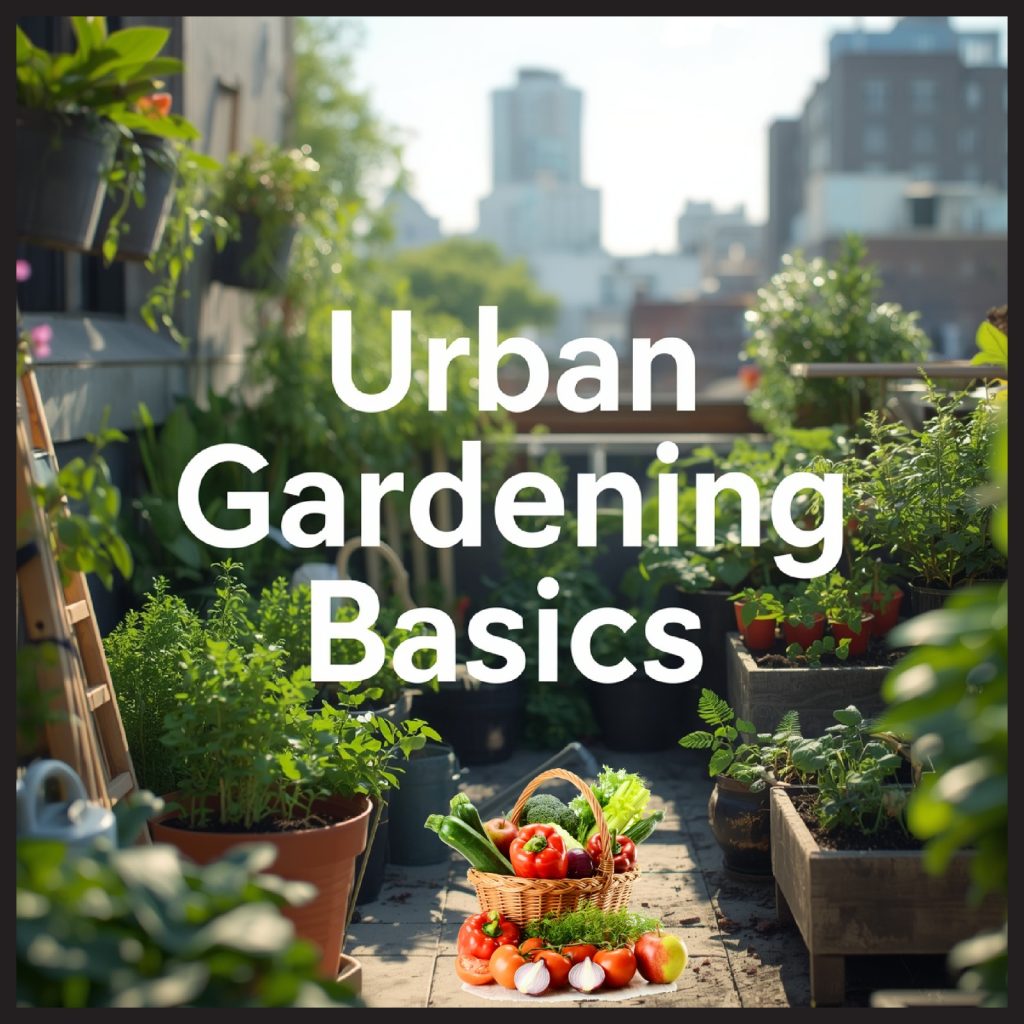Urban Gardening Basics 25 | balcony garden | greennworld
Urban Gardening Basics In today’s fast-paced urban life, Urban Gardening Basics provides an opportunity for city dwellers to connect with nature, improve their environment, and grow fresh, healthy produce. With limited space, urban gardening is not just a hobby but a necessity for promoting sustainability, reducing carbon footprints, and fostering community engagement. Whether it’s a balcony garden, rooftop greenhouse, or community garden plot, mastering Urban Gardening Basics empowers individuals to cultivate greenery while enhancing quality of life. Urban gardening combines environmental stewardship, nutrition, and aesthetics, making it a holistic approach to city living. By understanding the fundamentals of planting, soil management, and space utilization, urban residents can transform concrete surroundings into thriving green spaces. The benefits extend beyond the physical garden: improved air quality, reduced urban heat, and increased biodiversity are just a few of the positive outcomes of embracing Urban Gardening Basics. The Importance of Urban Gardening Urban environments often suffer from pollution, heat islands, and a lack of green spaces. Urban Gardening Basics offers a practical solution to these challenges. By growing plants in city settings, residents contribute to cleaner air, increased oxygen levels, and reduced environmental stress. Moreover, urban gardens provide fresh fruits, vegetables, and herbs, reducing dependence on commercially transported produce and promoting healthier diets. Community gardens also foster social cohesion and educational opportunities. Schools, neighborhoods, and local organizations benefit from teaching children and adults about sustainable living, plant biology, and food security. As urban populations grow, integrating green spaces through gardening becomes increasingly critical. Urban Gardening Basics lays the foundation for cultivating not just plants but also resilient and connected communities. Planning Your Urban Garden Before planting, careful planning is essential. Urban Gardening Basics begin with assessing available space, sunlight, and accessibility. Rooftops, balconies, windowsills, and patios are ideal locations for container gardens. Raised beds, vertical gardens, and hydroponic systems maximize limited space while maintaining plant health. Selecting appropriate plants based on climate, light exposure, and seasonal cycles ensures successful growth. Herbs like basil, mint, and parsley thrive in small containers, while vegetables such as tomatoes, peppers, and leafy greens can flourish in raised beds or vertical structures. Companion planting enhances growth and deters pests naturally, reducing the need for chemical interventions. Soil quality is another critical aspect. Using nutrient-rich, well-draining soil supports healthy root systems and encourages plant vigor. Composting kitchen waste and integrating organic fertilizers align perfectly with sustainable Urban Gardening Basics, creating a closed-loop ecosystem within city settings. Soil Preparation and Composting Healthy soil is the cornerstone of successful urban gardens. Urban Gardening Basics emphasizes soil testing, nutrient balance, and organic matter integration. Gardeners should ensure pH levels are suitable for chosen plants and enrich the soil with compost or natural amendments. Composting is a sustainable practice that transforms kitchen scraps, coffee grounds, and yard waste into nutrient-rich soil. This process reduces landfill waste while providing essential minerals for plant growth. Vermicomposting, or worm composting, is an excellent method for apartments and small spaces, offering efficient and odorless compost production. By understanding soil dynamics and practicing composting, urban gardeners create fertile grounds for healthy plants, which directly contributes to the success of Urban Gardening Basics. Selecting Plants for Urban Spaces Choosing the right plants is vital for efficient and productive urban gardens. Urban Gardening Basics suggests prioritizing species that thrive in confined spaces, tolerate varying light conditions, and require minimal maintenance. Leafy greens like lettuce, spinach, and kale grow quickly in containers and provide regular harvests. Fruit-bearing plants such as cherry tomatoes, strawberries, and dwarf citrus trees add variety and nutrition. Flowering plants like marigolds and nasturtiums attract pollinators, supporting overall garden health. Native plants are particularly beneficial, as they adapt well to local climates, resist pests naturally, and support urban biodiversity. Combining edible plants with ornamental species creates aesthetically pleasing gardens that serve both practical and decorative purposes. Thoughtful plant selection forms a core principle of Urban Gardening Basics. Watering and Irrigation Techniques Efficient water management is crucial for urban gardens. Urban Gardening Basics advocates consistent, targeted watering to maintain soil moisture without waste. Drip irrigation systems and self-watering containers deliver water directly to plant roots, reducing evaporation and runoff. Rainwater harvesting provides an eco-friendly water source, minimizing reliance on municipal supplies. Collecting and storing rainwater in barrels or tanks ensures sustainable irrigation, particularly during dry seasons. Mulching around plants also conserves moisture, suppresses weeds, and enriches the soil naturally. Implementing smart watering strategies enhances plant growth, conserves resources, and embodies environmentally responsible Urban Gardening Basics. Pest Management and Plant Health Maintaining plant health is a key aspect of Urban Gardening Basics. Pests and diseases can disrupt growth and reduce yields, but urban gardeners can manage these challenges using organic and integrated methods. Companion planting, such as placing basil near tomatoes or marigolds near vegetables, naturally deters pests. Neem oil, insecticidal soap, and diatomaceous earth provide eco-friendly solutions without harming beneficial insects. Regular monitoring for signs of disease, proper pruning, and ensuring adequate airflow between plants also support healthy growth. By combining preventive and reactive strategies, urban gardeners can maintain robust plants, demonstrating that Urban Gardening Basics prioritizes both productivity and sustainability. Container Gardening and Vertical Gardening Limited space is a common constraint in urban settings, but Urban Gardening Basics offers creative solutions. Container gardening allows cultivation in pots, planters, and recycled containers, while vertical gardening maximizes wall, balcony, or fence space. Vertical gardens, also known as green walls, support a variety of plants and improve air quality in dense city areas. Hydroponics and aeroponics further enhance space efficiency by growing plants in water or mist systems without soil. These methods reduce resource use, enable higher yields, and encourage innovation in urban farming. Container and vertical gardening techniques are essential for anyone practicing Urban Gardening Basics, turning small urban spaces into lush, productive gardens. Seasonal Gardening and Crop Rotation Adapting gardens to seasonal cycles improves yields and plant health. Urban Gardening Basics include understanding planting schedules, frost dates, and crop rotation principles. Planting cool-season crops like lettuce and spinach in

